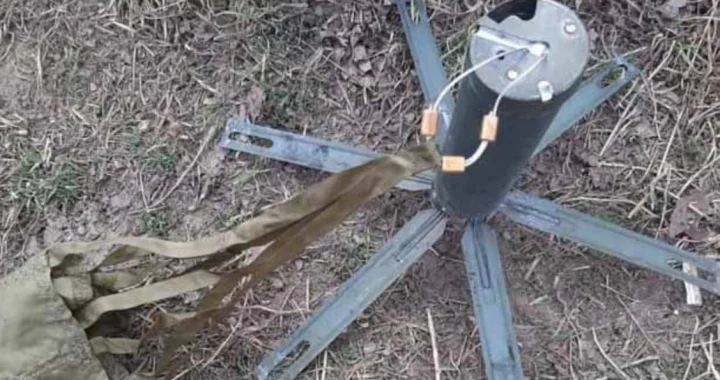An Australian professor of artificial intelligence has dismissed a Russian claim that its antipersonnel mines in Ukraine can distinguish between soldiers and civilians.
University of NSW Professor Toby Walsh said the use of Russian POM-3 mines was in his memory the first time a Russian weapon with alleged AI capability had been used in the invasion of Ukraine.
He said the POM-3 bomb was reminiscent of the “Bouncing Betty” mine used by the Nazis in World War II. These types of antipersonnel mine are designed to maximally maim their victims. When triggered, Bouncing Betty would spring up to waist height and spray steel fragments all around it.
Russia’s POM-3 similarly sends out lethal fragments in all directions from above the ground, but operates using different technology. The mines are fired by rockets several kilometres away and, after parachuting to earth, with bury themselves if they land on soft ground, or be deployed on spring-loaded feet if they land on a hard surface, according to unexploded ordinance site cat-uxo.com.
Kharkiv region, Russian forces reportedly used the rocket mining system “Земледелие”
— OSINTtechnical (@Osinttechnical) March 26, 2022
Utilizes rockets to deploy a mine payload at distance. pic.twitter.com/O2lrAsiD5h
The POM-3 thrusts a seismic rod sensor into the ground and, if it detects the vibrations of people, will send out metal fragments in a lethal radius of 16 metres, the website says.
There have been numerous reports of Russia using rockets to launch various types of mines which can automatically create minefields 5 to 15 km away. In a report last year it was claimed the POM-3 could distinguish a person from an animal and hear footsteps against the background of vibrations from passing vehicles.
Last week there were reports that Russia had deployed the POM-3 in Kharkiv, Ukraine and justified its use claiming it could distinguish between soldiers and civilians and therefore didn’t contravene international law.
“Russia appears to be using antipersonnel mines in Ukraine that are equipped with artificial intelligence that is claimed to be able to distinguish between soldiers and civilians,” New Scientist reported.
Professor Walsh said the use of POM-3 mines was the first time he was aware of AI enhanced weaponry being used in the war. Professor Walsh said the mine picked up vibrations in the ground and used the signature of those vibrations to identify people approaching.

“It then springs up in the air and sends explosive shrapnel out,” he said. You don’t have to step on these POM-3 mines, you can be up to 50 feet (15 metres) away.
Professor Walsh said the mines were prohibited under the UN Convention on the Prohibition of the Use, Stockpiling, Production and Transfer of Anti-Personnel Mines which Ukraine and 164 countries had signed, but not Russia.
Professor Walsh however said it was likely the Russian claim that the mine could distinguish between soldiers and civilians was bogus.
“They (the Russians) are clearly using some smarts to work out that’s the vibrations of a person approaching, to pick it out from the noisy signal of vibrations.
“But to be able to do some seismic analysis would require some sort of sophisticated signal processing, but it’s highly doubtful that it could tell apart a soldier from an adult.
“Maybe they can claim to tell an adult apart from a child because a child will have a smaller seismic footprint. But they’d probably have a similar seismic footprint to an adult further away.”
Professor Walsh said he was sceptical about the Russian claim and said the antipersonnel mine still violated the UN convention, even if it could make a distinction.
Published in The Australian newspaper.
